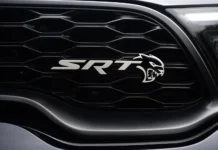
Toyota Research Institute tested a specially prepared autonomous Supra to drift around a course, as part of their safety research.
The autonomous Toyota Supra in question is a race-prepared vehicle that a driver can drift with. In this case, the vehicle’s development team augmented it with additional components allowing it to work on its own. The actual driving experiments, on the other hand, were carried out at Thunderhill Raceway in California, on its 2-mile ‘West’ track.

It’s their hope that this tech will be another layer to save drivers.
Toyota Research Institute (TRI) at Stanford University is looking at how a vehicle can avoid potential accidents in different ways — and drifting happens to be one of them, evidently. Getting this vehicle to drift accurately on its own may lead to future development of Nonlinear Model Predictive Control (NMPC).
“When faced with wet or slippery roads, professional drivers may choose to ‘drift’ the car through a turn. but most of us are not professional drivers,” said Jonathan Goh, TRI research scientist. “That’s why TRI is programming vehicles that can identify obstacles and autonomously drift around obstacles on a closed track.”
Toyota

Essentially, the TRI engineers are trying to bring together the capabilities of a professional driver and automated driving tech. The vehicle could have a third option when a crash seems eminent. Drifting is only part of it. This demonstration shows where their goal is: they want a new level of active safety technology. And, in time, Toyota wants to share this tech with other auto manufacturers. This way, they will have another driver safety option to deploy.
Having witnessed how technical drifting can be, the accomplishments of TRI and the autonomous Toyota Supra are already impressive. The fact that engineers can be use this information in the future for driver safety is astounding.
Check out this brief video:

























